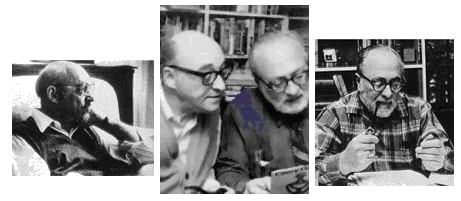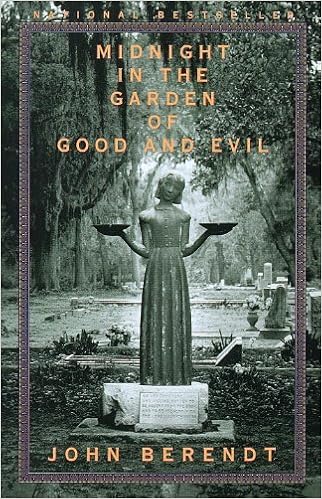by B.K. Stevens
"Being short does not mean
being slight," Flannery O'Connor maintains in "Writing Short Stories."
"A short story should be long in depth and should give us an experience
in meaning." I think all the nominees for this year's Best Short Story
Agatha would agree. The nominated stories include whodunits, suspense
stories, and character studies. They include contemporary stories and
historical mysteries, serious stories and humorous ones, realistic
stories and stories laced with fantasy or whimsy. But all the nominated
stories, I think, are long in depth, offering readers a variety of
experiences in meaning.
All
the authors of the nominated stories have contributed to this post.
Each picked an excerpt from her story and commented on it briefly. I
hope you enjoy these glimpses into the stories and also hope you'll
decide to visit the Malice Domestic website to read the stories in full.
And if you're going to Malice, I look forward to seeing you there.
"A Year without Santa Claus?" by Barb Goffman
Alfred Hitchcock Mystery Magazine, January/February 2015
Here's the passage:
"Look at this email from Santa."
"First
someone poisoned Frosty's doppelganger," Stan read aloud. He turned to
me. "Doppelganger? Who's he trying to impress with his fancy language?"
Stan
had never been a big fan of Santa's. Something about not getting a
certain potato gun he'd wanted as a kid. I sighed loudly and tapped the
tablet. "Read."
"Okay,
okay." He looked back down. "First someone poisoned Frosty's
doppelganger. Then my look-alike was run down. And now someone's offed
an Easter Bunny impersonator. Shot him between the ears. New Jersey's
too dangerous for me this year. Sorry, Annabelle. Maybe next Christmas.
Love, Santa." Stan's eyes returned to mine. "Uh oh."
Uh oh indeed. I shook my head. This was a catastrophe. Santa couldn't skip out on our kids.
It's
two weeks till Christmas, and Santa has just notified Annabelle, the
head of everything magical that happens in New Jersey, that he's not
coming there this year. A murderer is on the loose--it's not safe, he
says. Annabelle can't let the poor kids suffer, so she sets out to catch
the murderer. But even with her magical powers, Annabelle can't just
conjure up whodunit. So she sets off to investigate the old-fashioned
way, asking questions and taking names. But will it be enough? Can
Christmas be saved?
To read the story: http://www.malicedomestic.org/PDF/Goffman_Year.pdf
"A Questionable Death," by Edith Maxwell
History and Mystery, Oh My (Mystery & Horror, LLC)
In
the following passage from "A Questionable Death," 1888 Quaker midwife
Rose Carroll has brought a pregnant client of hers to see David Dodge, a
physician at the new hospital in the neighboring town. Rose's client,
Helen, has been showing symptoms of illness not related to her
pregnancy.
"I'll need a small lock of your hair," David told Helen when he was finished examining her.
It
had taken us twenty minutes to find a hack, we had to wait a bit to see
David, and he had taken care with his examination, so it was now
getting on for five o'clock.
"Why?" Helen asked, taken aback.
"Just
to aid in assessing your health," David said, slipping me a look behind
Helen's back. He handed her a small pair of scissors.
Helen
shrugged, but handed the scissors to me. I clipped off a small bit from
near her neckline and handed the deep brown lock to David, along with
the scissors.
"Thank
you for coming in," he said. "I'll have an answer for you within a
day's time. And Rose, thanks for bringing her. I'll summon my carriage
and driver to take you both back to Amesbury."
"That's very kind of thee," I said.
"I'll need to use the outhouse before we leave." Helen blushed a little.
"Oh,
we have the new chain-pull toilets," David said with a note of pride in
his voice. "The lavatory is just down the hall to the right. It's
labeled Ladies." He pointed the way.
After the door closed behind Helen, I gave him a quizzical glance.
"My teacher in medical school would call it gastric fever." He gazed at me. "I suspect poison."
"Poison?" I whispered, moving to his side.
"Arsenic. I'll tell you for certain after I've analyzed the hair." His brows knit, and he went on, "Don't let on to her. Yet."
This
short scene comes about a third of the way through the story. It
reflects the rapid changes in the late 1880s--the new chain-pull toilets
in the hospital, the technology to analyze arsenic from a clipping of
hair--contrasted with the horse-drawn carriages and Rose's Quaker way of
speaking. It also gives the reader a likely cause for Helen's symptoms,
which Rose will continue to investigate, and shows that she and David
have a relationship as medical professionals in addition to their
romantic one.
To read the story: https://edithmaxwell.files.wordpress.com/2015/01/questionabledeath.pdf
"A Killing at the Beausoleil," by Terrie Farley Moran
Ellery Queen's Mystery Magazine, November 2015
My
Agatha-nominated story, "A Killing at the Beausoleil,"is a prequel to
the Read 'Em and Eat cozy mystery novels, including the Agatha Award
winning Well Read, Then Dead, as well as Caught Read-Handed and the soon-to-be-released Read to Death.
In
this excerpt we meet Sassy Cabot and Bridgy Mayfield on their first day
in Fort Myers Beach. The building manager of the Beausoleil is showing
them their new rental apartment.
Bridgy leaned in. "Sassy, what a gorgeous place to start our new lives."
Pleased
with her comment, K. Dooney went for super-wow. He tugged on one cord
of a wall's worth of creamy vertical blinds, and, like a well-trained
platoon, they made a snappy left turn. Florida sunshine streamed in
between the slats and danced all around the room. I fell into an instant
fantasy of sipping my morning coffee while sitting on the terrace,
drenched in sunlight. Mr. Dooney yanked another cord, and the slats
marched in unison, half column left, half column right.
Below
us, great white birds with wingspans measured in feet, rather than
inches, circled lazily around fishing boat bobbing in the Gulf of
Mexico. The horizon pushed on forever.
A
view that might seem nice enough standing on the beach appeared
majestic from the fourth-floor window. I let out a deep sigh of
contentment.
Usually the bouncy one, Bridgy was more restrained. She tapped K. Dooney on the arm. "Who is that man sleeping on our terrace?"
In Well Read, Then Dead
Sassy mentions that she and Bridgy moved to Fort Myers Beach three
years ago. A number of readers contacted me because they were wondering
how Sassy and Bridgy settled into their life on Fort Myers Beach. So at
the urging of the readers, I decided to write this prequel short story,
which was published in Ellery Queen Mystery Magazine.
This
particular scene comes early in the story. It is a favorite of mine
because it gives the reader a glimpse of the vibrant south Florida
setting while indicating trouble to come in the person of the "sleeping"
man.
To read the story: http://www.malicedomestic.org/PDF/Moran_Beausoleil.pdf
"Suffer the Poor," by Harriette Sackler
History and Mystery, Oh My (Mystery & Horror, LLC)
Anne
Heatherton, my story's protagonist, tours London's East End with a
group of philanthropic women of means. The conditions that exist here in
the 1890s appall the ladies. The group's leader expresses her view of
how they should proceed.
"Well,
ladies," Mrs. Pinckney, the group leader, announced, "we have a great
deal to think about. But I am truly confident that we can make a
difference. I believe it is our moral duty to share the blessings of our
fortunate circumstances with others. But certainly not to be
patronizing or morally superior. Don't you agree?"
The women nodded emphatically and whispered to each other as they moved toward the outskirts of the East End.
This
passage illustrates the dilemma of offering assistance to people who
suffer from abysmal poverty and yet seek to maintain their pride and
independence.
To read the story: http://www.malicedomestic.org/PDF/Sackler_SUFFER_THE_POOR.pdf
"A Joy Forever," by B. K. Stevens
Alfred Hitchcock Mystery Magazine, March 2015
In
"A Joy Forever," narrator Chris, an aspiring photographer, travels to
Boston hoping to take a picture that captures "the spirit of New
England." To save money, Chris stays with his crude, domineering uncle,
Mike Mallinger. After a miserable day of failing to find a good subject
for the photograph, Chris returns to the house, where Mike's second
wife, Gwen, is working on an embroidery project. Gwen seems to be meek
and submissive, seems to have surrendered utterly to Mike's bullying and
abuse. She sympathizes with Chris's artistic frustrations and
recommends patience, because "sometimes, you can't make good things
happen right away." Here, Chris responds.
"You're
sure patient." I walked over to look at her tapestry. "That's lovely,
Aunt Gwen. Did you design it yourself? Are you going to fill in all that
space with those tiny flowers? That takes more patience than I'll ever
have."
The
design consisted of a mass of flowers--not arranged in a landscape or
vase, not forming a pattern in any usual sense, but a joyous profusion
ordered by a harmony I could feel but not define. The colors were
dazzling, the variety of flowers amazing. No two were exactly alike, and
some, I was sure, bloomed only in her imagination, never in any garden.
And each flower was composed of dozens of tiny stitches. Each must have
taken hours to create.
She
blushed--a proud, vibrant blush this time. "I'm glad you like it. I've
been working on it for a long time. A long, long time. I take it out
whenever I have a spare minute. So I can't do much at a time. But I work
on it every day." Her smile hardened. "Every single day. I'll never
give up, not till I finish. And when it's done--why, when it's done,
it's going to be wonderful."
I
hope this passage hints that Gwen may be keeping secrets, that she may
be neither as helpless nor as harmless as she seems. I hope readers will
sense that everything Gwen says may have a double meaning. She's
talking about her tapestry, yes, but is she also talking about some
other project she's been working on "every single day" for "a long, long
time," some other project she'll "never give up"? Whatever that project
is, "when it's done, it's going to be wonderful"--it's going to be a
joy forever. This passage also continues the flower imagery I've tried
to develop since the story's first paragraph, the imagery that
represents Gwen's independence and suppressed creativity. And it
juxtaposes, for the first time, Gwen's tapestry and Chris's
photograph--two artistic projects that will come together again when the
story ends.
To read the story: http://www.malicedomestic.org/PDF/Stevens_Joy.pdf
The Authors
Barb Goffman
has won the Macavity and Silver Falchion awards for her short crime
fiction. She's been a finalist seventeen times for national
crime-writing awards, including the Agatha, Anthony, and Derringer
awards. Her award-winning story collection,
Don't Get Mad, Get Even,
includes seven of her nominated stories. She has two new stories
scheduled to be published later this month. "Stepmonster" will appear in
Chesapeake Crimes: Storm Warning (on sale 4/26), and "The Best-Laid Plans" will appear in
Malice Domestic 11: Murder Most Conventional (on sale 4/28). Barb runs a freelance editing and proofreading service focusing on crime fiction. http://www.barbgoffman.com/
Edith Maxwell
writes the Quaker Midwife Mysteries and the Local Food Mysteries, the
Country Store Mysteries (as Maddie Day), and the Lauren Rousseau
Mysteries (as Tace Baker), as well as award-winning short crime fiction.
Her "A Questionable Death" is nominated for a 2016 Agatha Award for
Best Short Story. The tale features the 1888 setting and characters from
Delivering the Truth, which releases on April 8. Maxwell is
Vice-President of Sisters in Crime New England and Clerk of Amesbury
Friends Meeting. She lives north of Boston and blogs with the other
Wicked Cozy Authors, and you can find her on Facebook, twitter,
Pinterest, and at her website, edithmaxwell.com.
Terrie Farley Moran is the best-selling author of the Read 'Em and Eat cozy mysteries series.
Well Read, Then Dead, winner of the Agatha Award for Best First Novel 2014, was followed by
Caught Read-Handed in 2015.
Read to Death will be released in July 2016. Terrie's short mystery fiction has been published in
Ellery Queen Mystery Magazine, Alfred Hitchcock Mystery Magazine,
and numerous anthologies. Her short story "A Killing at the
Beausoleil," prequel to the Read 'Em and Eat novels, has been nominated
for an Agatha award for Best Short Story. She also co-writes Laura
Child's Scrapbooking Mystery series. Together they have written
Parchment and Old Lace (October 2015) and
Crepe Factor (October 2016). website: www.terriefarleymoran.com
Harriette Sackler
serves as Grants Chair of the Malice Domestic Board of Directors. She
is a multi-published short story writer. Her latest story, "Suffer the
Poor," appears in
History and Mystery, Oh My! and has been
nominated for this year's Agatha Award for Best Short Story. She is a
member of Dames of Detection and is co-owner, co-publisher, and
co-editor at Level Best Books. Her nonfiction book about House with a
Heart Senior Pet Sanctuary will be published in 2017. Harriette lives in
the D.C. suburbs with her husband and their two dogs. website:
www.harriettesackler.com
B.K. (Bonnie) Stevens is the author of
Interpretation of Murder, a traditional whodunit offering insights into deaf culture, and
Fighting Chance, a martial arts mystery for young adults. She's also published over fifty short stories, most in
Alfred Hitchcock Mystery Magazine. Some of those stories are included in
Her Infinite Variety: Tales of Women and Crime,
a collection being published by Wildside Press. B.K. has won half a
Derringer and has been nominated for Agatha and Macavity awards. This
year, both
Fighting Chance and "A Joy Forever" are nominated for
Agathas. B.K. and her husband, Dennis, live in Virginia and have two
amazing daughters, one amazing son-in-law, and four perfect
grandchildren. www.bkstevensmysteries.com















































